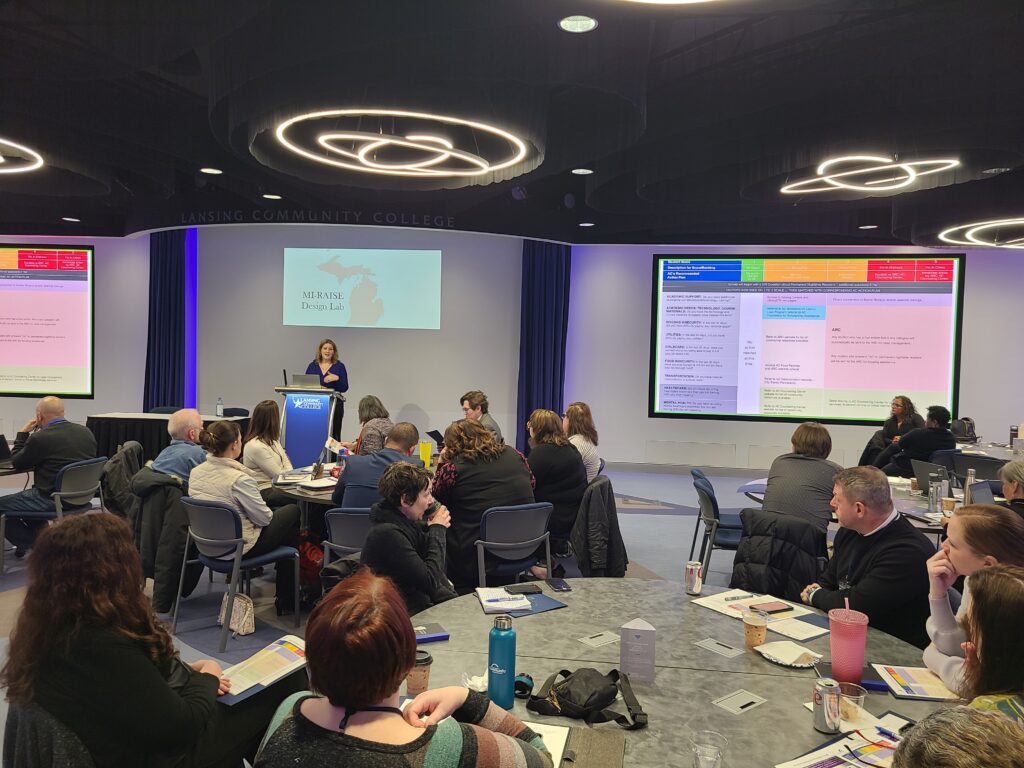As illustrated in our latest report, Insights for the New Talent Landscape, the workforce is aging and retirements have jumped 113 percent since the COVID-19 pandemic, an increase of 3.2 million retirements nationwide. Baby boomers, the largest generation in U.S. history, currently comprise over 1 in 5 participants in Michigan’s labor force. Their imminent departure from the workforce over the next decade means Michigan is slated to lose over 211,000 workers, given current trends in fertility and labor force participation. However, retirement risk varies significantly by industry and we can leverage data from the U.S. Census Bureau’s Quarterly Workforce Indicators (QWI) to get a closer look at risk across industries in West Michigan.
What is QWI?
The Quarterly Workforce Indicators are derived from Longitudinal Employer-Household Dynamics (LEHD) data, which link employees and employers to track more granular characteristics over time and geography — like age, race, and education. This data set is the result of federal-state partnerships, which allows information to be shared between local and federal Census programs to enable a closer look at wages by worker sex and age across counties, job creation rates of young firms across industries, and hiring levels by worker race and education levels across metropolitan areas.
West Michigan Industries by Age
Although the labor force participation rate of older workers, typically defined as those ages 55 and older, has generally followed an upward trajectory over the past decade, the COVID-19 pandemic may have dramatically changed things. Risk increases with age, which means that older workers who remain in the labor force (those who aren’t able, or don’t wish, to retire) are more likely to seek out industries and occupations that don’t require close proximity to others. It’s important to understand which industries employ the highest share of workers nearing retirement age to ensure the workforce system is prepared to replace these impending vacancies, and to establish robust talent development efforts in afflicted sectors to prevent the loss of experience that accompanies an exodus of experienced practitioners.
Mining, Quarrying, and Oil and Gas Extraction leads the industries in West Michigan with the largest share of older workers, with nearly a third of the workforce aged 55 and older (31.7%), closely followed by Agriculture, Forestry, Fishing, and Hunting (31.0%) and Real Estate and Rental Leasing (31.0%). It’s critical to note that despite boasting the largest proportion of older workers, these three industries combined employ just 4.5 percent of the aging workforce in West Michigan (7,935 workers). The largest volume of older workers can be found in Manufacturing — a sector employing nearly 37,000 workers aged 55 and up — but considering it’s the largest industry in the region, these workers comprise just 25.3 percent of the sector’s total workforce.
Conversely, the industries with the largest concentrations of younger workers (below 35) are those that were most severely impacted during the onset of the pandemic because they rely heavily on customer interactions and workers to be in close proximity to others. Accommodation and Food Services leads the industries in West Michigan with nearly two-thirds of the sector’s workforce below the age of 35 (65.2%), distantly trailed by Arts, Entertainment, and Recreation (47.5%) and Retail Trade (42.5%). These three industries yield the highest proportions of entry-level jobs, which tend to appeal to high school and college-aged students, so it should come as no surprise for their workforces to be significantly younger than industries where a majority of jobs require experience. This trend falls flat for the fourth youngest industry in West Michigan, Health Care, which employs 37,500 workers below 35 (38.4% of the industry’s total workforce). Yet just 35.7 percent of Health Care jobs require a high school diploma or less, which means that nearly one-third of the workforce is comprised of recent college graduates who have a postsecondary credential but are relatively new in their careers.
Future Data Topics
Have you been enjoying these “Data Points” blogs and are interested in other data? Let us know what topics you’d like to know more about on our Twitter @WMTalent2025! We’d like to crunch some numbers that you’re interested in!
{{cta(‘be643ac7-73e2-40f6-a7b2-7c5927924bf4′,’justifycenter’)}}


